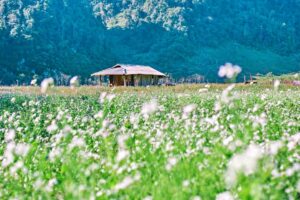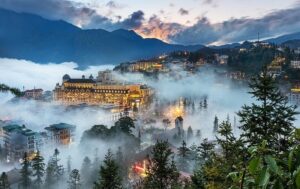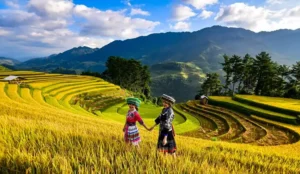Hoa Binh
Hoa Binh is a province located in the northwest region of Vietnam, approximately 73 kilometers southwest of Hanoi, the capital of Vietnam. Known for its beautiful landscapes, rich cultural diversity, and historical significance, Hoa Binh is a perfect destination for travelers seeking a peaceful retreat and a deeper understanding of Vietnam’s traditional life and natural beauty. The province is home to stunning lakes, mountainous regions, waterfalls, and numerous ethnic minorities, making it a great place to explore both nature and culture.

Hoa Binh’s stunning natural beauty, with lush forests, vast rivers, and striking hills, makes it an ideal destination for nature lovers, trekkers, and those interested in experiencing the authenticity of rural Vietnam. The province also offers several cultural and historical attractions that reveal the region’s long history and the traditions of its ethnic groups, such as the Tay, Muong, H’mong, and Thai people.
Key Attractions in Hoa Binh
1. Hoa Binh Lake
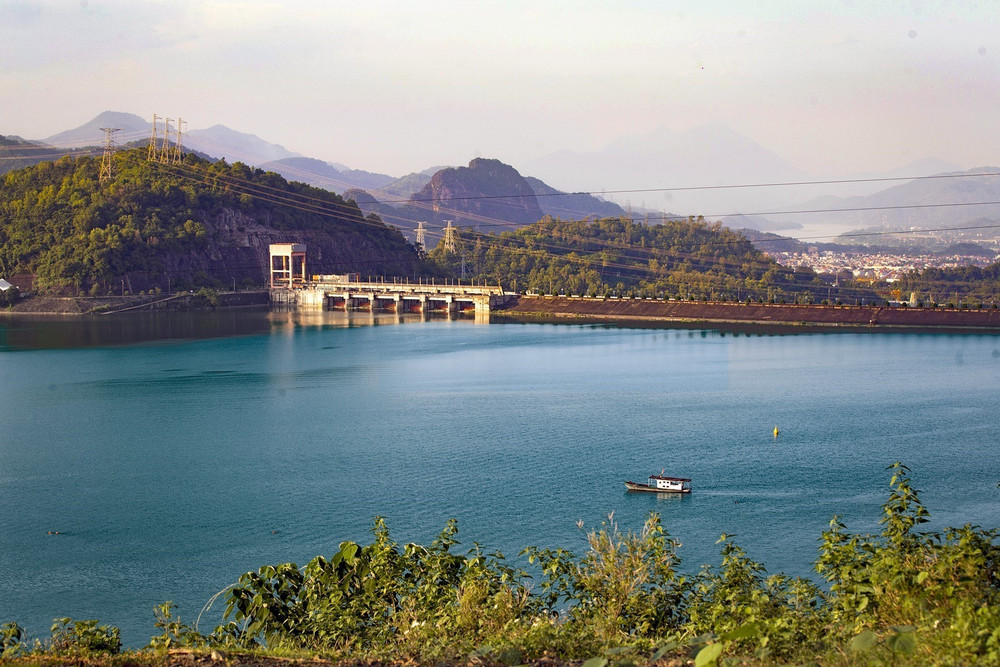
Hoa Binh Lake is one of the most popular natural attractions in the province. The lake, which covers a vast area of 8,000 hectares, was created by the Hoa Binh Hydroelectric Plant. Surrounded by lush forests and mountains, Hoa Binh Lake offers a serene atmosphere, making it a perfect spot for boating, fishing, and relaxation. Visitors can enjoy the peaceful surroundings and take in the beautiful views of the turquoise waters, limestone islands, and the green hills surrounding the lake.
The lake is also home to several floating villages where visitors can interact with local communities and learn about their lifestyle, which is deeply connected to the water and nature. It is an excellent place for both relaxation and adventure.
2. Mai Chau Valley
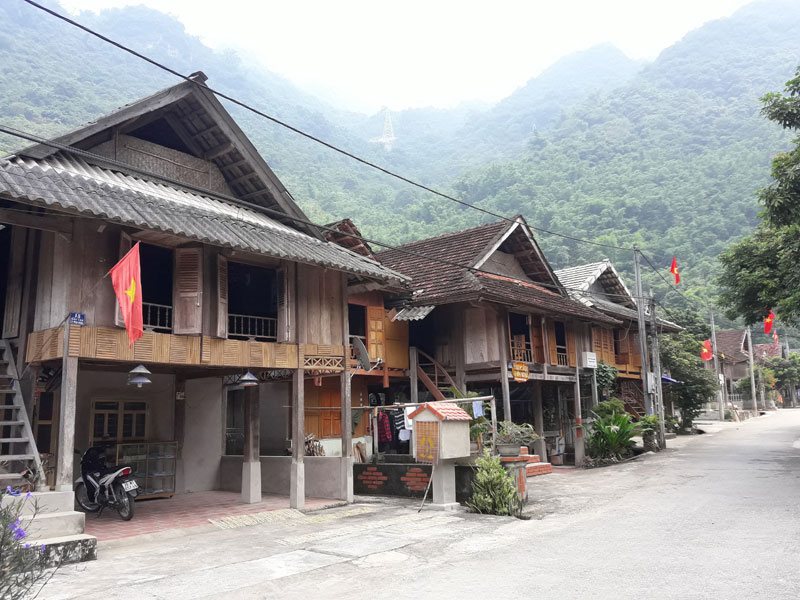
Mai Chau Valley is one of the most famous tourist destinations in Hoa Binh, known for its breathtaking landscape of lush green valleys, terraced rice fields, and traditional stilt houses. The valley is inhabited mainly by the White Thai people, and visitors can immerse themselves in the local culture by visiting ethnic minority villages and participating in traditional activities.
The best time to visit Mai Chau is during the harvest season when the rice fields turn golden, creating a picturesque scene. In addition to its stunning natural beauty, Mai Chau offers a range of outdoor activities, including hiking, cycling, and exploring the surrounding mountains. The local markets and cultural performances, such as the traditional Thai dance, provide visitors with an opportunity to experience the vibrant culture of the region.
3. Pu Noong Village
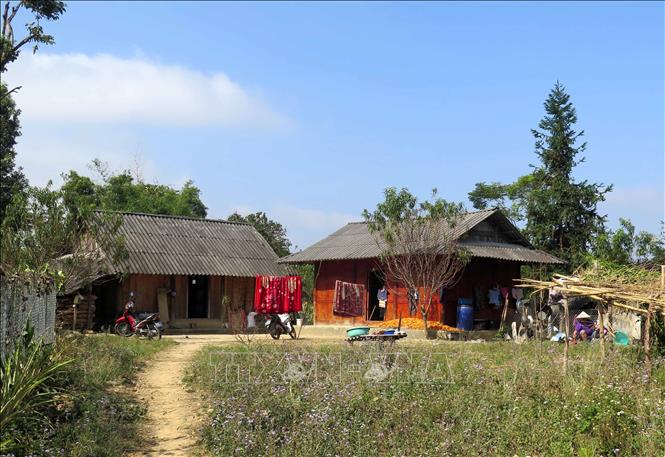
Pu Noong is a traditional village located in Hoa Binh’s Mai Chau District. This village is known for its beautiful natural surroundings, traditional stilt houses, and the local culture of the White Thai people. Visitors to Pu Noong Village can experience the lifestyle of the ethnic group, including their traditional farming practices, crafts, and unique way of life.
The village is also famous for its traditional handicrafts, including weaving and embroidery. Visitors can purchase handmade goods and learn about the traditional methods used by the locals. The village is a great place for those who wish to explore Vietnam’s rural life and understand the culture of one of the country’s indigenous groups.
4. Thung Nai
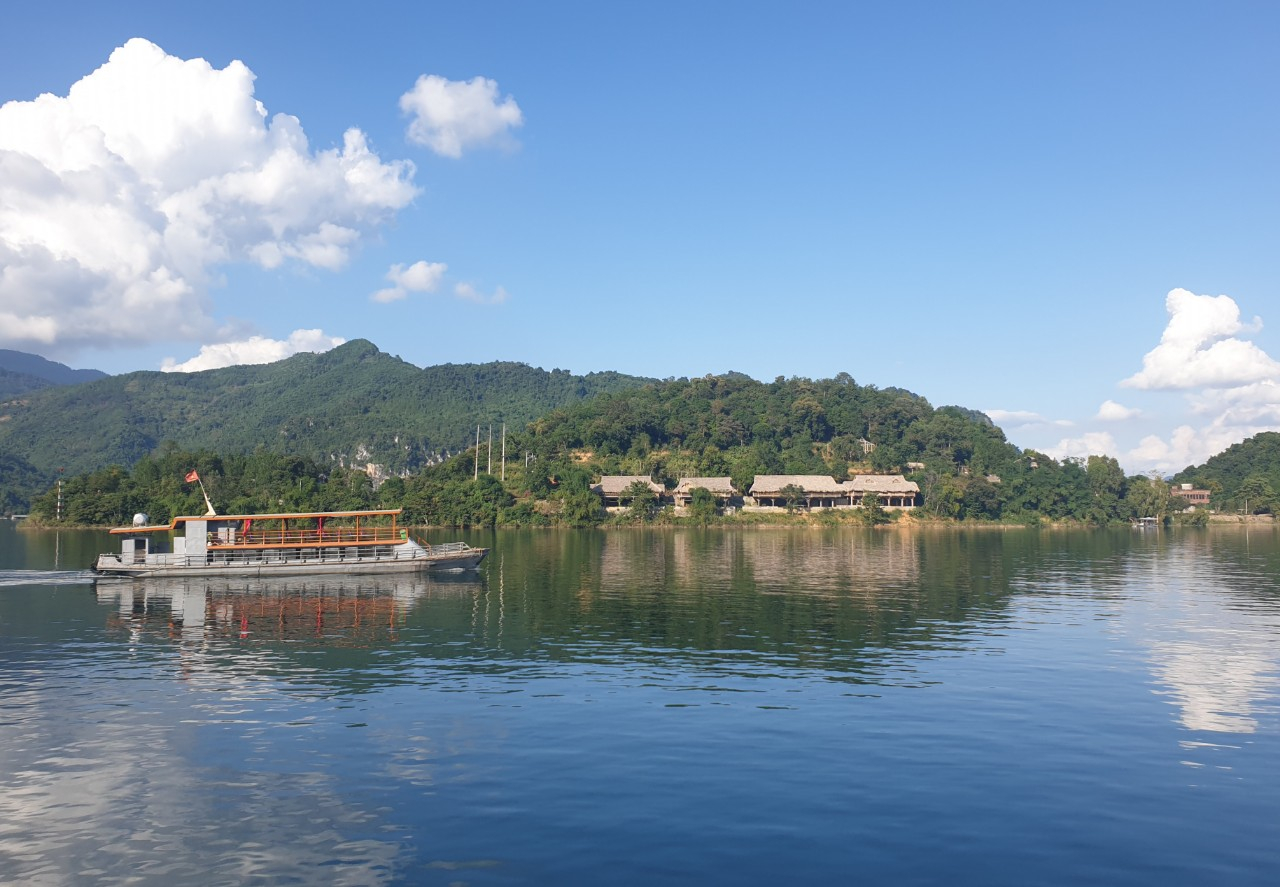
Thung Nai is often referred to as “Ha Long Bay on land” because of its striking natural beauty. Located along the Da River, Thung Nai features emerald-green waters and a landscape dotted with limestone islands and lush forests. It is a perfect place for boat tours, sightseeing, and photography. Visitors can explore the tranquil surroundings, visit the caves, or hike up to the hilltops for panoramic views of the region.
Thung Nai is also home to several small villages where local people still live in traditional ways. Visiting Thung Nai offers a rare opportunity to experience the traditional lifestyle of the locals and enjoy a peaceful retreat in nature.
5. Coc Da Bac Cave
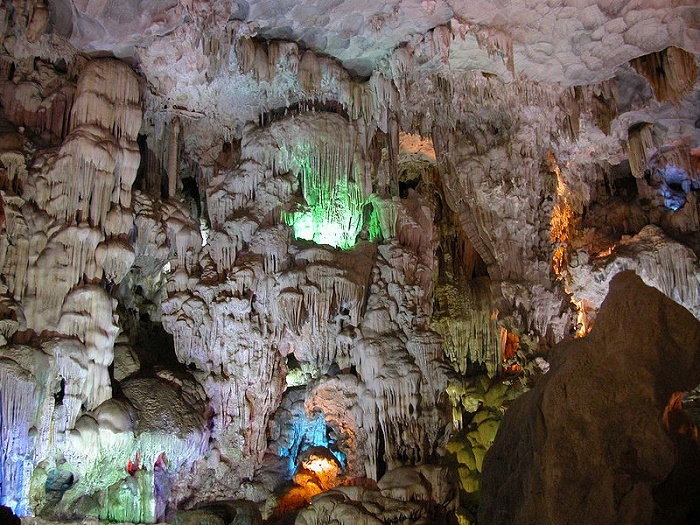
Address: Coc Mountain, Da Bac Hamlet, Lien Son Commune, Luong Son District, Hoa Binh Province
Also known as Fairy Cave, Silver Stone Frog Cave is a popular attraction for those who love exploration during their travels in Hoa Binh. The cave is associated with a legend about a fairy descending to the mortal world for a stroll, a story still passed down by locals to this day.
Coc Da Bac Cave is a complex consisting of three small caves: Co Tien Cave, Long Tien Cave, and Mau Cave. All three caves possess a pristine, poetic beauty, with stalactites hanging from the ceiling like shimmering beaded curtains.
6. Kim Boi Hot Springs
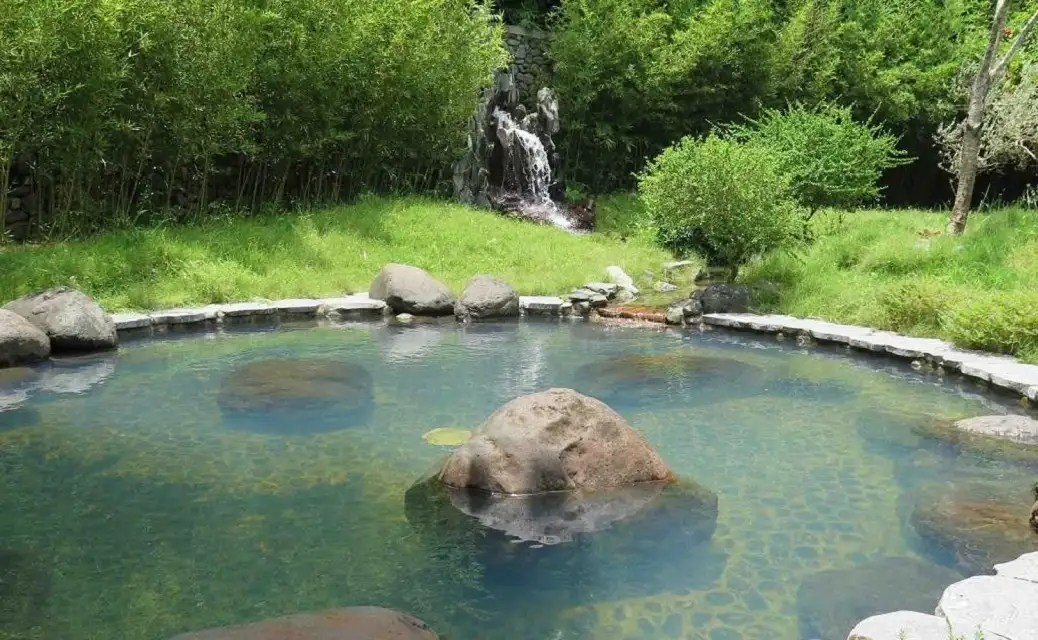
Often referred to as the “precious gem of the Northwest mountains,” Kim Boi Hot Springs features a clear, year-round mineral spring with water temperatures consistently around 36°C. It is the perfect destination in Hoa Binh for those seeking relaxation.
In addition to the unique underground mineral spring, this Hoa Binh tourist spot also offers excellent health benefits with its mineral mud baths. Visitors can enjoy various recreational activities and indulge in a wide range of delicious local dishes waiting for you to explore and savor.
Cultural and Historical Significance
Hoa Binh is home to several ethnic groups, including the Muong, Thai, H’mong, and Tay people. These communities have maintained their distinct cultural practices and traditions for centuries, making the province a rich cultural hub in northern Vietnam. The traditional architecture, colorful festivals, and folk art provide visitors with a unique cultural experience.
Hoa Binh also holds historical significance, with its rich heritage dating back thousands of years. The province has been a strategic location for trade and cultural exchanges between northern Vietnam and neighboring countries, such as Laos and China. Today, visitors can explore several historical sites, including ancient temples, pagodas, and relics from the French colonial period.

